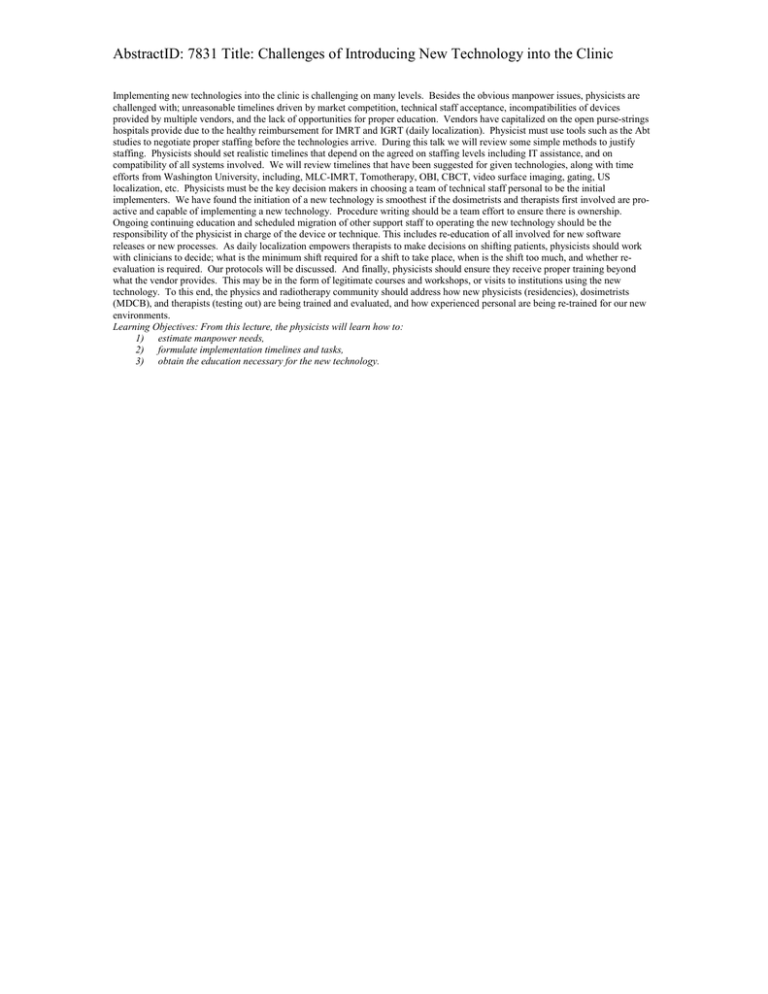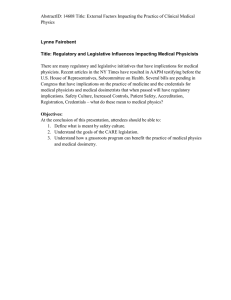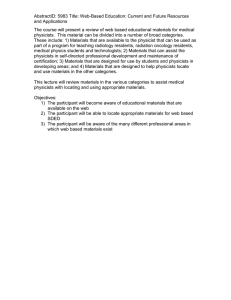AbstractID: 7831 Title: Challenges of Introducing New Technology into the...
advertisement

AbstractID: 7831 Title: Challenges of Introducing New Technology into the Clinic Implementing new technologies into the clinic is challenging on many levels. Besides the obvious manpower issues, physicists are challenged with; unreasonable timelines driven by market competition, technical staff acceptance, incompatibilities of devices provided by multiple vendors, and the lack of opportunities for proper education. Vendors have capitalized on the open purse-strings hospitals provide due to the healthy reimbursement for IMRT and IGRT (daily localization). Physicist must use tools such as the Abt studies to negotiate proper staffing before the technologies arrive. During this talk we will review some simple methods to justify staffing. Physicists should set realistic timelines that depend on the agreed on staffing levels including IT assistance, and on compatibility of all systems involved. We will review timelines that have been suggested for given technologies, along with time efforts from Washington University, including, MLC-IMRT, Tomotherapy, OBI, CBCT, video surface imaging, gating, US localization, etc. Physicists must be the key decision makers in choosing a team of technical staff personal to be the initial implementers. We have found the initiation of a new technology is smoothest if the dosimetrists and therapists first involved are proactive and capable of implementing a new technology. Procedure writing should be a team effort to ensure there is ownership. Ongoing continuing education and scheduled migration of other support staff to operating the new technology should be the responsibility of the physicist in charge of the device or technique. This includes re-education of all involved for new software releases or new processes. As daily localization empowers therapists to make decisions on shifting patients, physicists should work with clinicians to decide; what is the minimum shift required for a shift to take place, when is the shift too much, and whether reevaluation is required. Our protocols will be discussed. And finally, physicists should ensure they receive proper training beyond what the vendor provides. This may be in the form of legitimate courses and workshops, or visits to institutions using the new technology. To this end, the physics and radiotherapy community should address how new physicists (residencies), dosimetrists (MDCB), and therapists (testing out) are being trained and evaluated, and how experienced personal are being re-trained for our new environments. Learning Objectives: From this lecture, the physicists will learn how to: 1) estimate manpower needs, 2) formulate implementation timelines and tasks, 3) obtain the education necessary for the new technology.



